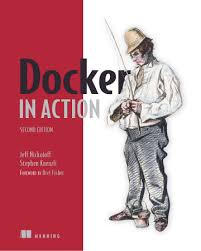Docker microservices offer a multitude of advantages for developing, deploying, and managing applications in distributed computing and cloud environments. Here's a detailed breakdown of the key benefits:
White Paper: Docker Microservices for WordPress, Joomla, Ofbiz, and Magento in Distributed Computing and Cloud Environments
Benefits of Docker Microservices
Docker microservices offer a multitude of advantages for developing, deploying, and managing applications in distributed computing and cloud environments. Here's a detailed breakdown of the key benefits:
-
Enhanced Scalability: Microservices architecture inherently promotes scalability. By decomposing an application into independent services, each service can be scaled up or down independently based on its specific workload demands. This granular control over scaling enables efficient resource utilization and cost optimization.
-
Improved Resilience: Microservices architecture fosters resilience by isolating functionalities within individual services. If a particular service encounters a failure, it does not cripple the entire application. Other services can continue to function seamlessly, minimizing downtime and ensuring application availability.
-
Accelerated Development and Deployment: Microservices promote faster development lifecycles. Developers can work on individual services concurrently, leading to quicker development cycles and more frequent deployments. Additionally, containerization with Docker streamlines deployments as microservices are packaged with all their dependencies, ensuring consistent behavior across different environments.
-
Optimized Resource Utilization: Traditional monolithic applications can be resource-intensive, often underutilizing available resources. Docker containers, on the other hand, are lightweight and isolate applications, enabling efficient resource allocation and improved hardware utilization.
-
Superior Portability: A significant advantage of Docker microservices is their portability. Docker containers encapsulate everything required to run an application, including its code, libraries, and runtime environment. This inherent portability allows microservices to be seamlessly moved across various environments, be it on-premises, private cloud, or public cloud, without any modifications.
Challenges and Considerations
While Docker microservices offer compelling benefits, there are certain challenges and considerations that need to be addressed:
-
Network Latency: In distributed computing environments, geographically dispersed microservices can introduce network latency issues. Increased network traffic due to communication between microservices can impact performance. Careful design and optimization of communication protocols are essential to mitigate latency issues.
-
Data Consistency: Maintaining data consistency across multiple microservices can be a challenge. When data is distributed across services, ensuring consistent data updates and preventing inconsistencies requires careful planning and implementation of data synchronization mechanisms.
-
Testing Complexity: Testing microservices applications can be more intricate compared to monolithic applications. Due to the distributed nature and interconnectedness of microservices, comprehensive testing strategies that encompass individual services, service interactions, and overall system behavior are necessary.
-
Deployment and Orchestration: Managing the deployment and orchestration of numerous microservices across different environments can be complex. Leveraging container orchestration tools like Docker Swarm or Kubernetes can streamline deployment processes and automate service scaling.
-
Security Concerns: Security considerations are paramount when dealing with microservices architectures. Microservices introduce a larger attack surface due to the increased number of components. Implementing robust security measures, such as authentication, authorization, and encryption, is crucial to safeguard microservices and communication channels.
Best Practices
To reap the full benefits of Docker microservices and ensure successful implementation, adhering to the following best practices is recommended:
-
Start Small and Scale Incrementally: Begin by decomposing a limited set of functionalities into microservices. This allows for a smoother learning curve and facilitates easier identification and rectification of potential issues. Gradually introduce more microservices as your expertise and confidence grow.
-
API Design Principles: Clearly defined and well-structured APIs are the cornerstone of communication between microservices. APIs should be designed with principles like versioning, discoverability, and documentation in mind. This ensures efficient communication and simplifies integration between services.
-
Continuous Integration and Delivery (CI/CD): Implementing a robust CI/CD pipeline is vital for streamlining development, testing, and deployment processes in a microservices environment. CI/CD automates these processes, enabling faster deployments and reduced risks associated with manual interventions.
-
Monitoring and Logging: Proactive monitoring and meticulous logging are essential for maintaining the health and performance of microservices applications. Monitoring tools can provide insights into service health, identify potential issues, and facilitate troubleshooting. Logging allows you to trace service interactions and debug problems efficiently.
-
Security Best Practices: Enforce robust security practices throughout the development lifecycle of your microservices application. Secure coding practices, vulnerability management, container security, and network security measures are all crucial to mitigate security risks and protect your application from potential attacks.
By understanding the benefits, challenges, and best practices associated with Docker microservices, organizations can make informed decisions about adopting this architecture for developing and deploying applications in distributed computing and cloud environments.
Reference List:
General Microservices and Docker
- Fowler, Martin. Microservices. Martin Fowler, 2014. https://docs.docker.com/
- Kubernetes Documentation. Kubernetes Documentation. Kubernetes, https://wordpress.org/
- Plugin Development Handbook. WordPress Plugin Handbook. WordPress Foundation, https://www.joomla.org/
- Joomla! Extensions Directory. Joomla! Extensions Directory. Joomla! Project, https://ofbiz.apache.org/download.html
- Ofbiz Documentation. Ofbiz Documentation. Apache Software Foundation, https://community.magento.com/t5/Magento-2-x-Programming/Magento-2-Developer-Documentation/td-p/10958
- Magento Marketplace. Magento Marketplace. Adobe, https://aws.amazon.com/
- Microsoft Azure Documentation. Azure Documentation. Microsoft, https://cloud.google.com/
Note: This is a starting point. You should research and include specific articles, books, and official documentation relevant to the specific points made in your white paper.
Disclaimer: This reference list is for informational purposes only and does not constitute legal or professional advice.
I hope this helps! Let me know if you have any other questions. Contact keencomputer.com for details.
